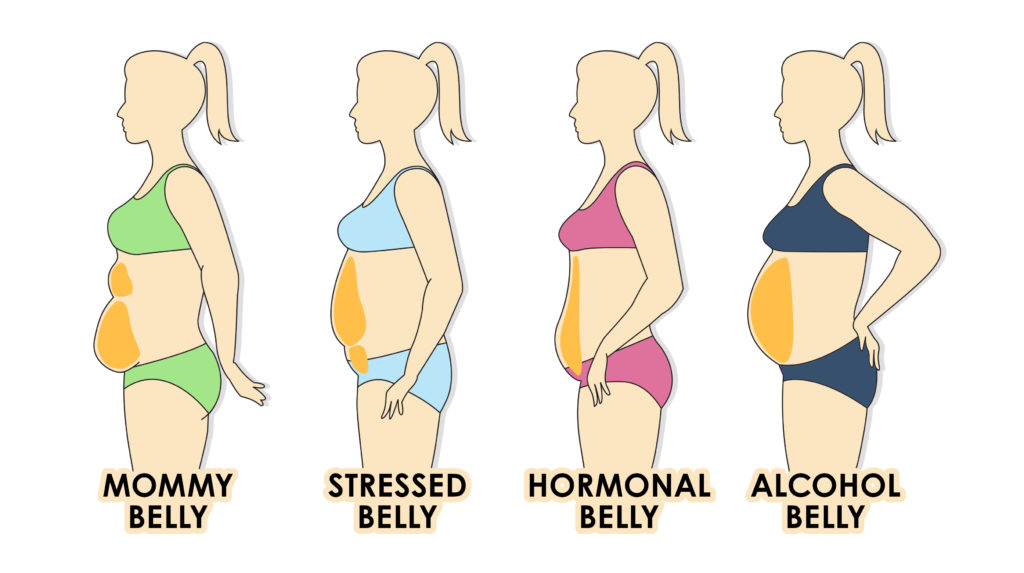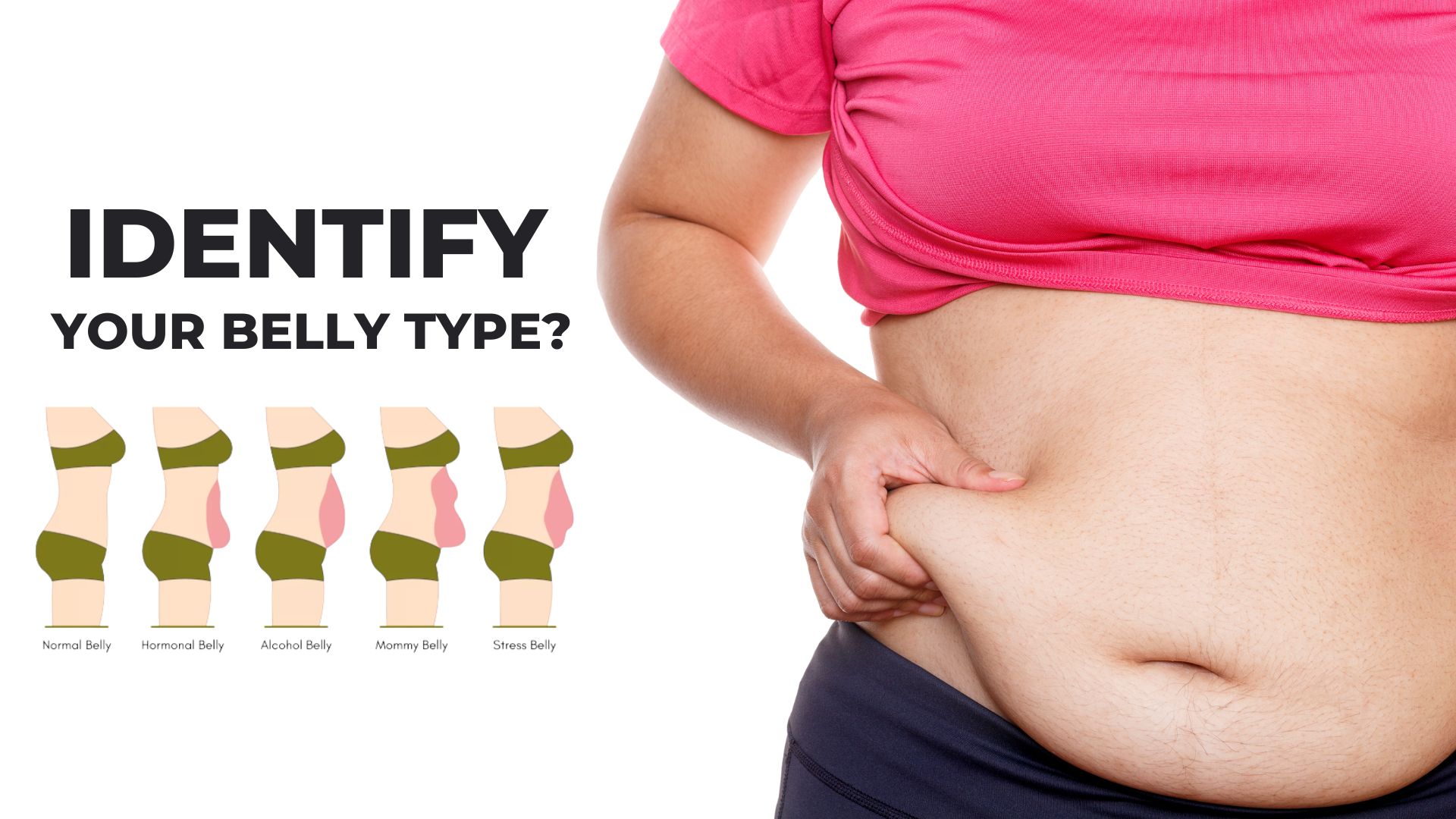Understanding The Belly Pouch: Causes, Solutions & Treatments
Ever been teased by someone that you’re like Santa Claus with that big, jiggly belly pouch? Or worse, friends asking “when’s the baby due?” when obviously, you’re not preggie! Well, you’re not alone! The belly pouch is a common concern for many, and not just teasing – it can have an impact on both your appearance and your health.
If you’ve spent your whole life struggling with the ‘bump of fat’ at the bottom of your stomach, let’s dive in! In this article, we will define what a pooch belly is, discuss its appearance, explore its causes, and what you can do about it. Let’s dive in!
What is the Belly Pouch? Is a bloated belly considered a belly pouch?
A belly pouch, also known as a “pooch belly” or “mommy pouch”, is an accumulation of stubborn excess fat in the abdominal area that doesn’t seem to go away, even with diet and exercise.
This is in contrast to a flat and toned tummy.
Anyone can have it, regardless of age or gender, although it is more common in women who have been through pregnancy.

What Does a Hormonal Belly Look Like?
You may not like how the extra fat protrudes over your jeans (the ‘muffin top’ effect), or perhaps the way it jiggles when you walk. For some, it may appear as a bulge or protrusion on the lower stomach, usually below the belly button.

What Causes a Belly Pouch?
A belly pouch may be caused by one or a combination of these factors; childbirth, genetics, poor posture, stress, hormonal issues, lack of exercise, and unhealthy eating habits.
Pregnancy
Many new mothers experience a protruding belly due to diastasis recti, a condition where the abdominal muscles stretch and separate during pregnancy to accommodate the growing uterus. This can persist even after childbirth.
Genetics
Genetics influence where our bodies tend to store fat, which is why some people naturally carry more weight around their stomachs, while others may store fat in their hips, thighs, or elsewhere. This happens because of inherited traits that affect fat distribution.
Hormonal changes
Hormonal changes, like thyroid disorders, can slow metabolism and make it harder to burn fat, especially around the belly, leading to weight gain and a larger tummy.
Stress
Life can get stressful, and unfortunately, stress can lead to weight gain, especially around the belly.
During high stress, the body releases cortisol, the “stress hormone,” which triggers fat storage, especially around the belly, as a survival mechanism. Elevated cortisol levels are linked to increased abdominal fat.
Health Implications of Belly Fat
Excess belly fat, particularly visceral fat around organs, increases the risk of heart disease, diabetes, and high blood pressure. Unlike fat under the skin, visceral fat can release harmful chemicals affecting our organs and metabolism.

Will Lower Belly Pouch Go Away?
Yes, all body fat can be reduced with the right lifestyle changes, and in some cases, medical intervention. The pooch belly is no different—though stubborn, it can be lost. The key is identifying the root causes and making the necessary adjustments.
How to Get Rid of the Belly Pouch?
To lose a belly pouch, you can make lifestyle changes like diet and exercise, explore non-surgical treatments or opt for surgical options
Lifestyle Intervention
- Exercise: Cardio and strength training can help burn calories and build muscle, targeting belly fat.
- Diet: A balanced diet with whole foods, lean proteins, and healthy fats helps reduce belly fat; avoid processed foods and sugary drinks.
- Foods to Avoid: Limit sugary snacks, fast food, and refined carbs, which contribute to belly fat.
- Foods that Help Reduce Belly Fat: Eat leafy greens, lean proteins, whole grains, and healthy fats to boost metabolism.
- Lifestyle Changes: Prioritize sleep, manage stress, and stay hydrated to regulate hormones and prevent belly fat.
Non-Surgical Treatments for Belly Pouch
- Body Contouring Treatments: Techniques like cryolipolysis (fat freezing) and radiofrequency are popular non-surgical options for reshaping and tightening the body.
- Skin Tightening – Endolift is an advanced procedure that uses laser technology to stimulate collagen production and tighten the skin, helping to reduce stubborn fat and improve body contouring without the need for surgery.
- Surgical Treatments
- Tummy Tuck (Abdominoplasty): Removes excess skin and fat, tightens muscles for a smoother abdomen. It has a longer recovery time but delivers great results.
- Liposuction: Removes excess fat from targeted areas, offering quick results but may not tighten skin, with some risks.
Fat deposits can and do make themselves at home in various parts of the body, but the belly is a very common area for fat accumulation. At Premier Clinic, we can provide you with any service related to fine-tuning your curves.
Our customer service representatives are available from 8 am to 12 midnight daily to answer your inquiries or make an appointment for your hair fall treatment. Alternatively, you may visit us at our Bangsar, TTDI, Mont Kiara, Puchong and KL City branch to make an appointment.
Please contact us for further information:
Whatsapp: https://wa.me/60126625552
Call: +6012-662-5552 (Malay/English)
Call: +6012-773-2074 (Chinese speaking)
Email: contactus@premier-clinic.com
References
- https://miaaesthetics.com/what-is-lower-belly-pooch-what-causes-it/
- https://www.drberg.com/blog/how-to-get-rid-of-lower-belly-pooch
